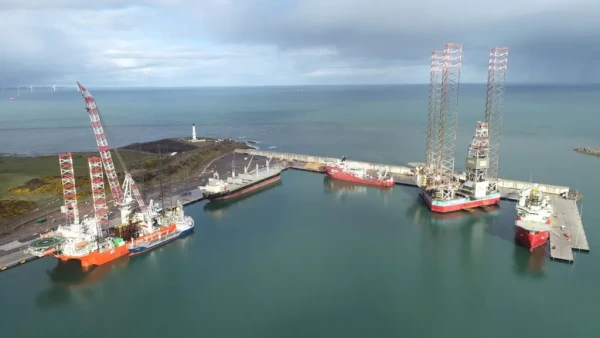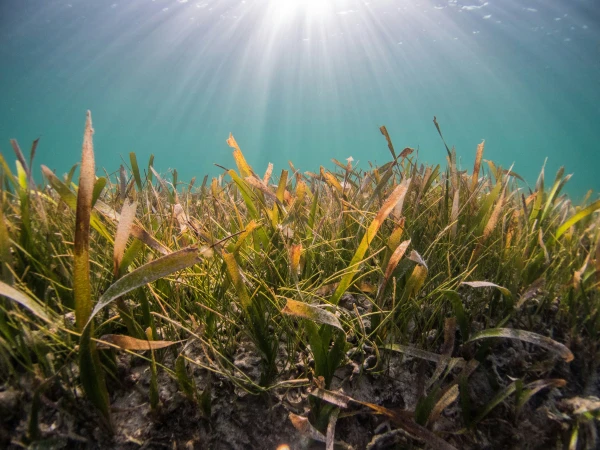Our Views
Blue Economy Intel #1: Debt-for-environment swaps
Today, we are starting a series of articles showcasing success stories on Blue Economy. The "Blue Economy Intel" series of posts will try to educate public and private sector professionals on how to take action to contribute to both the protection of the oceans and the creation of economic growth and achieve SDG #14 "Conserve and sustainably use the oceans, seas and marine resources for sustainable development.
Make sure you subscribe to our newsletter to receive similar updates and stay in touch. But, let's focus on the first article we are presenting today which will focus on how to use debt-for-environment swaps to raise funding to protect the ocean.
Introduction
A. Definition of Debt Swaps
Debt swaps are financial arrangements where a country's outstanding debt is exchanged, wholly or partially, for environmentally focused investments, initiatives, or projects. These transactions aim to alleviate a nation's economic burden while concurrently supporting critical environmental causes.
At the heart of debt swap, a government commits to protecting the environment with measurable objectives and In support of that commitment, the government negotiates to repurchase sovereign debt (often at a discount) and refinance it with more favorable interest rates and repayment terms. The resulting savings are then used to support new, planned and ongoing conservation work.
B. History and Types of Debt Swaps
The history of debt swaps dates back to the 1980s when the concept gained traction as a means to address the debt crises faced by developing nations. Over time, the evolution of debt swaps has witnessed a paradigm shift towards incorporating environmental considerations. Governments and international organizations have increasingly recognized the potential of debt-for-nature swaps as a tool for achieving both economic stability and environmental sustainability.
Various forms of debt swaps have emerged, each tailored to specific circumstances and objectives. These include debt-for-nature swaps, debt-for-climate swaps, and debt-for-adaptation swaps. Each type aims to address particular environmental challenges, such as biodiversity loss, climate change mitigation, and adaptation to environmental shifts. Understanding the nuances of these debt swap variations is crucial in implementing targeted strategies for ocean protection and broader environmental goals.
C. The Link between Debt Swaps and Ocean Protection
The intersection of debt swaps and ocean protection emerges as a promising strategy to tackle the financial challenges faced by nations while concurrently fostering environmental stewardship. By channeling resources from debt relief toward marine conservation efforts, countries can address both economic and ecological concerns. This symbiotic relationship offers a unique opportunity to create a positive impact on the oceans, contributing to the global effort to ensure their long-term sustainability.
Case Studies of Debt Swaps to Protect the Ocean
A. Debt Swaps in Ocean-Adjacent Countries
Costa Rica's Marine Conservation Initiative
In the early 2000s, Costa Rica engaged in a pioneering debt-for-nature swap with the United States. The country committed to protecting its coastal and marine ecosystems in exchange for the restructuring of a portion of its debt. This initiative led to the establishment of marine protected areas, sustainable fisheries management, and community-based conservation efforts along its coastlines.
Seychelles Blue Bond
In 2018, Seychelles, an archipelago in the Indian Ocean, creatively utilized financial instruments to address its debt and support ocean conservation. The Seychelles Blue Bond, supported by the World Bank, involved the issuance of bonds to raise capital for fisheries management and marine conservation projects. This innovative financial mechanism demonstrated the potential for market-based approaches to fund ocean protection.
The transaction involved buying US$21.6 million of debt owed by Seychelles to members of the Paris Club, including the UK, France, Italy, and Belgium
The agreement to forgo debt repayments was made conditional on Seychelles’ promise to expand its marine protected areas (MPAs) to 30% of its oceans, which was impressive because the country’s MPA coverage was less than 1%1. The Seychelles debt for ocean swap gained extensive international coverage1.
Gabon Debt-for-Ocean Swap
In July 2023, Gabon made international news by finalizing a debt-for-ocean swap facilitated by the US Conservation Organisation, The Nature Conservancy (TNC)1. The swap involved creditors exchanging US$500 million worth of debt in exchange for the government promising to enlarge marine protected areas to 30% of its oceans. This deal was expected to reduce Gabon’s foreign debt obligations and provide an additional US$163 million for marine conservation in the country.
However, the presentation of this deal has been criticized as misleading. Critics argue that the debt swap in Gabon did not cause the government of Gabon to commit to protecting 30% of its oceans, nor did it produce US$163 million in additional money for ocean conservation.
The debt swap is also controversial due to the political context in Gabon. A few weeks after the debt swap was announced, President Ali Bongo and his son were arrested, and a new government led by General Brice Nguema, Bongo’s cousin, was installed1. The catalyst of the arrest was election fraud, but it was also justified because the Bongo family, who have ruled Gabon since 1967, had criminally plundered the country, causing widespread poverty and a spiraling debt crisis.
These events have raised questions about the effectiveness and implications of debt-for-ocean swaps, particularly in countries with complex political and economic contexts.
Debt swap in Barbados
In September 2022, it was announced an innovative financial deal that enabled the Government of Barbados to redirect a portion of its sovereign debt service into marine conservation funding.
The deal unlocked approximately $50M to support environmental and sustainable development actions. Through this innovative debt conversion project, the Government of Barbados committed to protecting and effectively managing up to 30% of Barbados’ waters.
Credit Suisse, alongside CIBC FirstCaribbean, announced the completion of a debt conversion transaction for Barbados focused on allocating capital towards debt sustainability and marine conservation. Credit Suisse acted as Global Lead Arranger on the total USD 146.5 mn dual-currency term loan facility, also known as the blue loan, to Barbados, which was completed on September 20, 2022.
The blue loan was used to buy back certain Barbadian debt, including a portion of its USD bonds due in 2029. Barbados will direct the fiscal savings from the debt conversion, realized through lower debt service payments, to the Barbados Environmental Sustainability Fund (BESF) via a Conservation Funding Agreement. The BESF, which is expected to receive approximately USD 50 mn over the next 15 years, will fund marine conservation and other environmental and sustainable development projects in Barbados.
This transaction showcases an innovative model of how to raise conservation funding that promotes sustainable development, and environmental management and helps achieve the national development priorities, including the sustainable development and growth of Barbados’ blue economy.
B. Lessons Learned and Best Practices
Alignment with National Priorities: Successful case studies underscore the importance of aligning debt swap initiatives with a country's national development and conservation priorities. Tailoring projects to address specific environmental challenges ensures that both economic and ecological goals are met.
Inclusive Stakeholder Engagement: Engaging local communities, NGOs, and relevant stakeholders from the inception of debt swap agreements is crucial. Inclusion fosters community ownership, enhances project sustainability, and promotes the long-term success of marine conservation efforts.
Robust Monitoring and Evaluation: Implementing effective monitoring and evaluation mechanisms is essential. Regular assessments ensure that the intended environmental outcomes are achieved, providing valuable insights for ongoing project improvement and replication in other regions.
C. Challenges Faced and Overcome
Political and Economic Instability: Some countries face challenges associated with political and economic instability, which can impact the successful implementation of debt swaps. Establishing stability and governance structures is crucial to overcoming these obstacles.
Complex Negotiation Processes: Negotiating debt swap agreements can be intricate, involving multiple stakeholders with divergent interests. Successful cases emphasize the need for transparent negotiations, clear communication, and the establishment of mutually beneficial terms for all parties involved.
Ensuring Long-Term Sustainability: Sustaining the positive impact of debt swaps beyond the initial agreement period remains a challenge. Implementing strategies for continued funding, community involvement, and adaptive management is vital to ensuring the long-term success of ocean conservation projects initiated through debt swaps.
These case studies illustrate the potential of debt swaps as a mechanism for supporting ocean conservation, offering valuable insights into best practices and lessons learned for the broader application of such initiatives.
The Process of Implementing Debt Swaps for Ocean Conservation
Hiring the Right consultants
As a national government, you need to surround yourself with the best specialists with knowledge of Finance and the Environment to make sure you have the right capabilities in place to get through a complex deal with tough negotiations.
At Aninver Development Partners we can help you in the process if needed.
Designing a transaction
Once you have hired the right consultants, your organization will work with them to structure a deal that may be presented to the current creditors. Documentation needs to be prepared and the deal needs to be win-win for all parties.
Negotiation and Agreement Terms
Negotiations take place between the debtor country, creditor countries, and often a third-party conservation organization. The terms of the agreement typically involve the debtor country committing to certain conservation actions in exchange for debt relief.
Monitoring and Evaluation of Conservation Efforts
After the agreement is in place, there is usually a process for monitoring and evaluating the effectiveness of the conservation efforts. This can involve both local stakeholders and international organizations.
The Role of International Organizations in Debt Swaps
As the urgency of marine conservation grows, we can expect to see innovations in the structure and implementation of debt swaps. This could include linking debt relief more directly to measurable conservation outcomes, or expanding the role of private-sector creditors in these agreements.
International organizations and donors, such as World Bank, International Monetary Fund (IMF), and regional development banks, can play multiple roles to help ensure that these agreements take place and are fair and effective.
What roles can play the international organizations?
- Coordinating Multilateral Efforts
- Providing Technical Assistance and Expertise
- Technical Support for Negotiations
- Assisting with Policy design
- Executing Capacity Building
- Ensuring Accountability and Monitoring Progress
- Monitoring & Evaluation
- Advocacy for Policy Integration and Innovation
- Providing debt for the deal
- Providing guarantees for the deal










